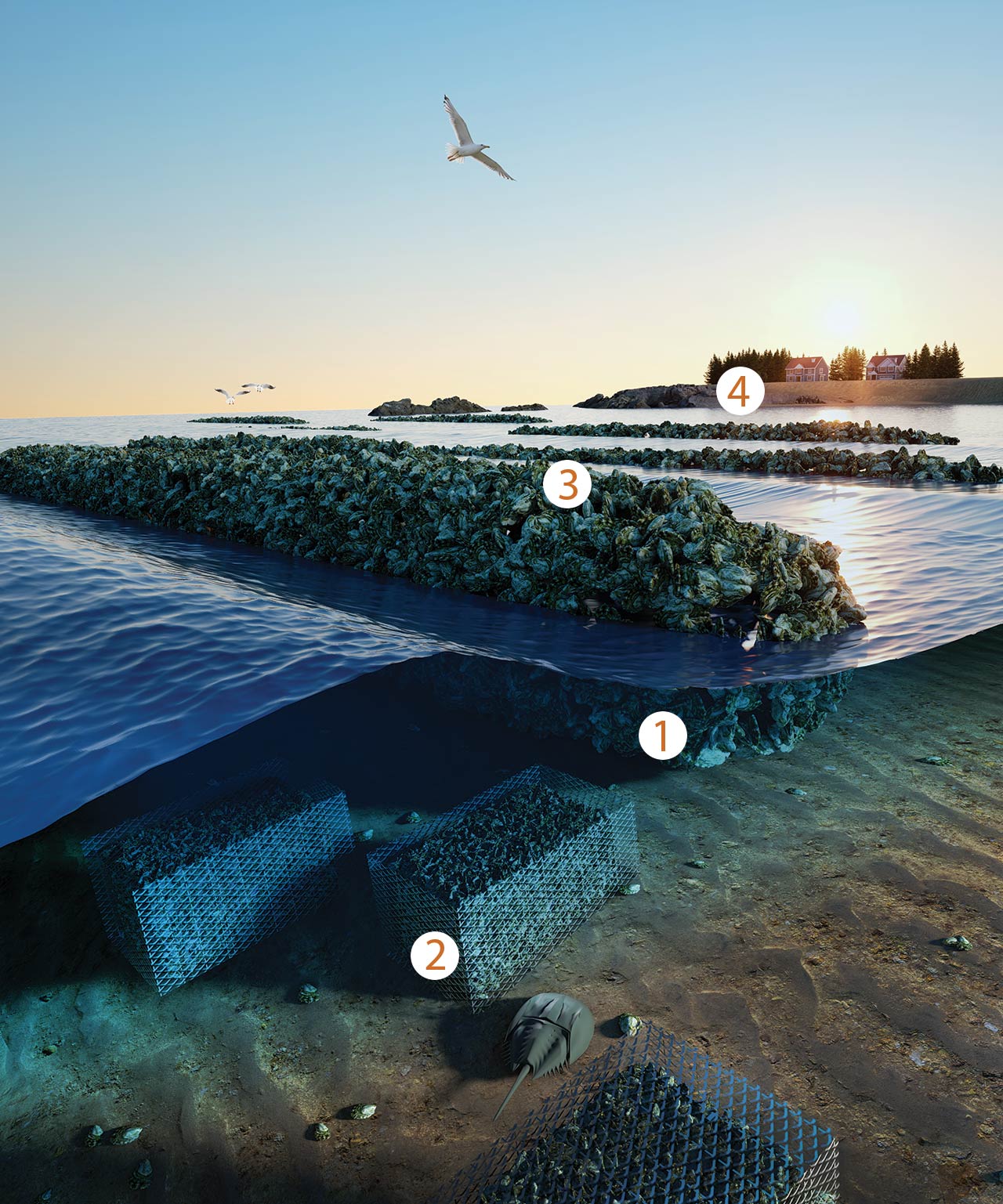

Protecting the planet’s sandy fringes is increasingly important: Around one-third of Americans live within 50 miles of the coast, even as climate change erodes the land beneath their feet. Storms and sea-level rise are eating away at the fragile edges of continents, leaving us with less and less solid ground to stand on. To combat water’s advance, some communities are depositing mollusks in strategic spots as a nature-inspired engineering solution. Here’s where and how oyster-tecture could keep our homes from crumbling away into the sea.
1. Beneath the surface
Undoing our damage to oysters can help ease our impact on everything else. Each one can filter up to 50 gallons of water a day. Replenished beds could help restore the Chesapeake Bay and surrounding lands, a region known for rare birds, horseshoe crabs, and agricultural pollution.
2. At the bottom
Larvae need something to hold on to. In lieu of their layered ancestral homes, 40-micron eggs can grow on discarded oyster shells from restaurants. The husks dry out for a year, then get seeded with eggs, bundled into porous containers, and dumped in the harbor.
3. Along the shore
Beaches lose thousands of cubic yards of sand to wind and waves every year. Sand shifts along shorelines naturally, but oysters can help prevent excess erosion. They slow the surf, keeping the little golden granules in place—and protect seaside homes from flooding.
4. In the breakers
When a wave breaks over an oyster colony, their clustered bodies slow the water, providing a natural seawall similar to coral. Bivalve-built reefs once protected vast tracts of the Atlantic coast, but overharvesting and pollution destroyed them. Hopefully we can rebuild these ancient buffers.
This story originally published in the Out There issue of Popular Science.